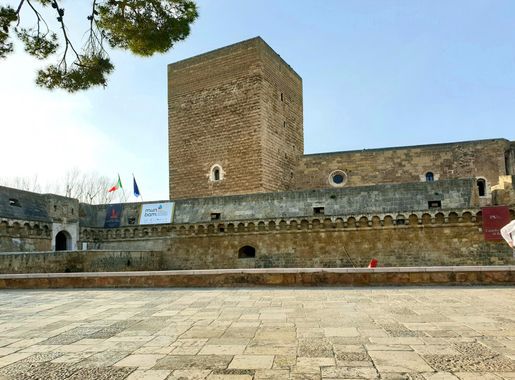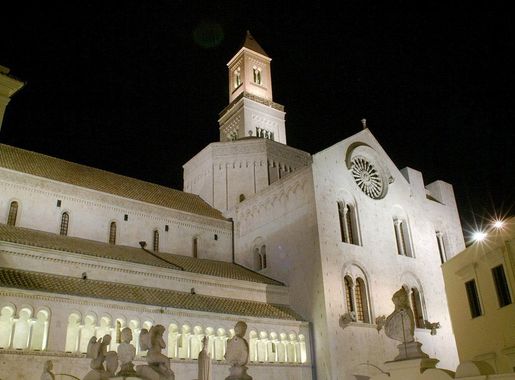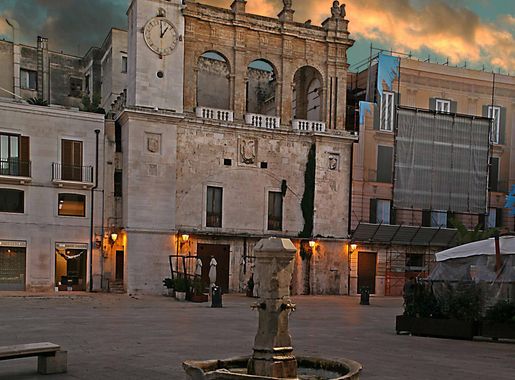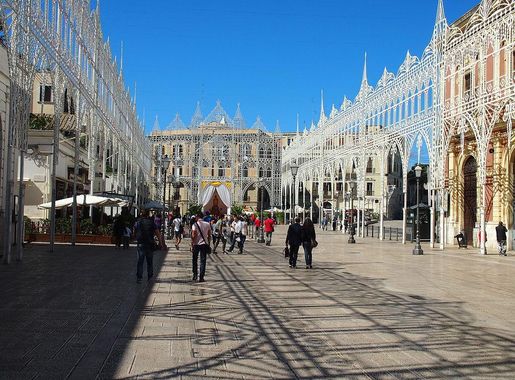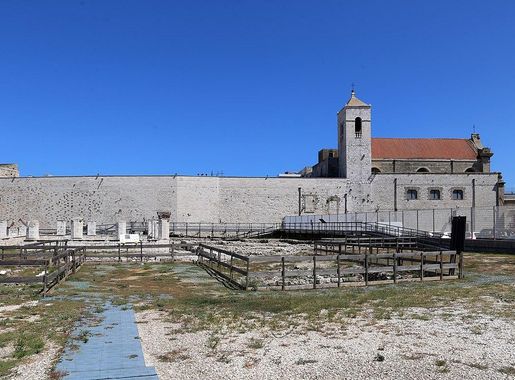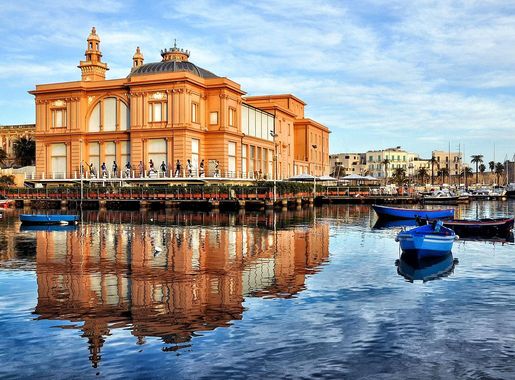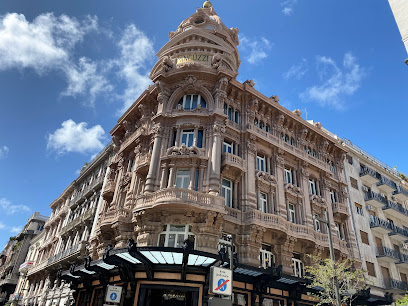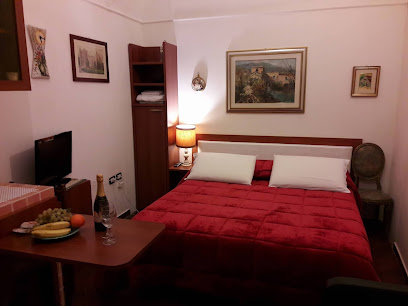
Bari Vecchia: The Heartbeat of Bari, Italy
Discover Bari Vecchia, the historic heart of Bari, Italy, where ancient charm meets modern vibrancy. Explore historic sites, savor authentic cuisine, and enjoy lively nightlife.
Bari Vecchia, the old town of Bari, Italy, is a charming labyrinth of narrow, winding streets and historic buildings that offer a glimpse into the city's rich past. This ancient neighbourhood is a living museum, where every corner tells a story. Walking through its maze-like alleys, you'll encounter centuries-old churches, quaint piazzas, and the warm aroma of freshly baked focaccia from local bakeries. The neighbourhood is anchored by the Basilica di San Nicola, a stunning example of Romanesque architecture that houses the relics of Saint Nicholas. This basilica is not only a religious site but also a cultural hub, drawing pilgrims and history enthusiasts alike. Nearby, the Bari Cathedral, dedicated to Saint Sabinus, is another architectural marvel worth visiting. Bari Vecchia is also a culinary paradise. Traditional trattorias and osterias serve up authentic Puglian cuisine, with dishes like orecchiette pasta and seafood risotto. The bustling Piazza Mercantile is the perfect spot to enjoy a leisurely meal while people-watching. As the sun sets, the neighbourhood comes alive with vibrant nightlife, featuring lively bars and outdoor cafes. Don't miss the chance to explore the ancient city walls and the Castello Normanno-Svevo, a Norman-Swabian castle that offers panoramic views of the Adriatic Sea. For a more contemporary experience, the nearby Lungomare promenade provides a scenic backdrop for a relaxing stroll along the waterfront.
Local tips in Bari Vecchia
- Wear comfortable shoes as the cobblestone streets can be uneven.
- Visit early in the morning or late in the afternoon to avoid the crowds.
- Try the local focaccia at a neighborhood bakery for an authentic taste of Bari.
- Carry a map or use a GPS, as the narrow streets can be confusing.
- Learn a few basic Italian phrases; locals appreciate the effort.
Bari Vecchia: The Heartbeat of Bari, Italy
Bari Vecchia, the old town of Bari, Italy, is a charming labyrinth of narrow, winding streets and historic buildings that offer a glimpse into the city's rich past. This ancient neighbourhood is a living museum, where every corner tells a story. Walking through its maze-like alleys, you'll encounter centuries-old churches, quaint piazzas, and the warm aroma of freshly baked focaccia from local bakeries. The neighbourhood is anchored by the Basilica di San Nicola, a stunning example of Romanesque architecture that houses the relics of Saint Nicholas. This basilica is not only a religious site but also a cultural hub, drawing pilgrims and history enthusiasts alike. Nearby, the Bari Cathedral, dedicated to Saint Sabinus, is another architectural marvel worth visiting. Bari Vecchia is also a culinary paradise. Traditional trattorias and osterias serve up authentic Puglian cuisine, with dishes like orecchiette pasta and seafood risotto. The bustling Piazza Mercantile is the perfect spot to enjoy a leisurely meal while people-watching. As the sun sets, the neighbourhood comes alive with vibrant nightlife, featuring lively bars and outdoor cafes. Don't miss the chance to explore the ancient city walls and the Castello Normanno-Svevo, a Norman-Swabian castle that offers panoramic views of the Adriatic Sea. For a more contemporary experience, the nearby Lungomare promenade provides a scenic backdrop for a relaxing stroll along the waterfront.
Iconic landmarks you can’t miss
Basilica San Nicola
Discover the architectural beauty and spiritual significance of Basilica San Nicola, a cultural landmark in Bari, Italy, dedicated to Saint Nicholas.
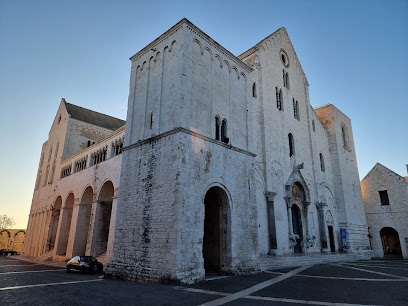
Basilica Cattedrale Metropolitana Primaziale San Sabino
Explore the Basilica Cattedrale Metropolitana Primaziale San Sabino, a stunning Romanesque cathedral in Bari, Italy, rich in history and stunning architecture.
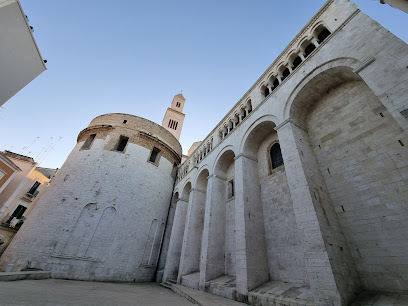
Il Fortino di Sant'Antonio
Explore the historic Il Fortino di Sant'Antonio in Bari, a scenic coastal fortification offering stunning views and rich maritime history.
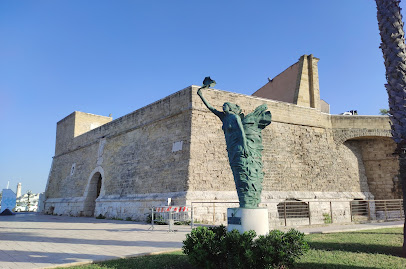
Largo Albicocca - Piazza degli Innamorati
Discover the romantic allure of Largo Albicocca - Piazza degli Innamorati, a charming square in Bari perfect for leisurely strolls and cultural immersion.

Muraglia di Bari
Discover the stunning Muraglia di Bari, a historical landmark that offers breathtaking views, rich heritage, and a glimpse into the city's vibrant culture.
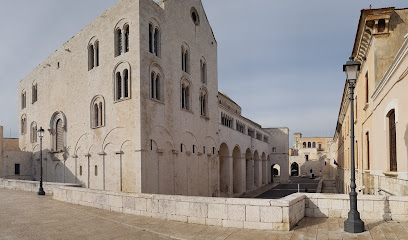
Ruderi di Santa Maria del Buon Consiglio
Discover the enchanting Ruderi di Santa Maria del Buon Consiglio in Bari, an open-air museum showcasing the remnants of a historic church amidst vibrant surroundings.
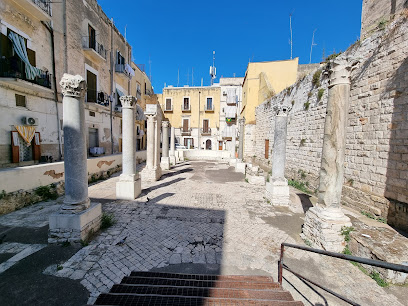
Palazzo del Sedile
Explore the enchanting Palazzo del Sedile, a historic gem in Bari that showcases the city's rich heritage and architectural beauty.
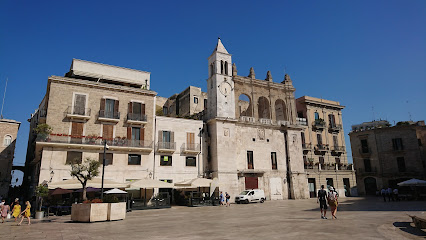
Column of Shame or Column of Justice
Visit Bari's Column of Shame or Column of Justice, a captivating sculpture that narrates the city's rich history and cultural transformation.
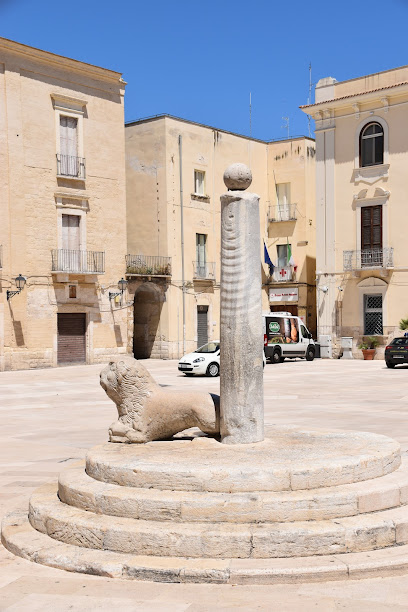
Palazzo Gironda
Explore the hidden beauty of Palazzo Gironda, a 17th-century jewel in Bari, showcasing exquisite architecture and a tranquil secret garden.
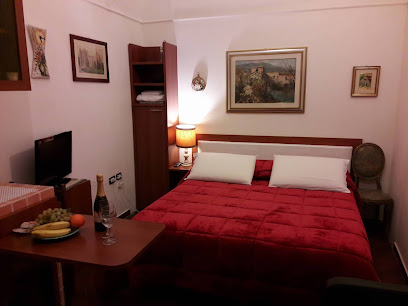
Ex Convento di Santa Chiara d'Assisi
Discover the serene beauty and historical significance of Ex Convento di Santa Chiara d'Assisi in Bari, a must-visit landmark steeped in rich Italian heritage.

Unmissable attractions to see
Essential places to dine
La Cantina dello Zio
Experience authentic Italian seafood dining at La Cantina dello Zio in Bari - where tradition meets taste.
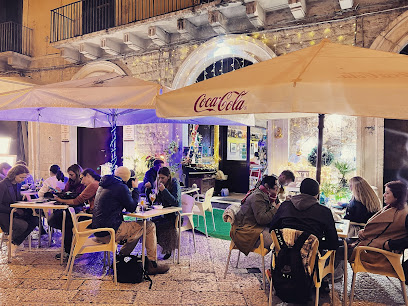
La Tana del Polpo
Experience authentic Southern Italian cuisine at La Tana del Polpo, where fresh seafood meets tradition in the heart of Bari.
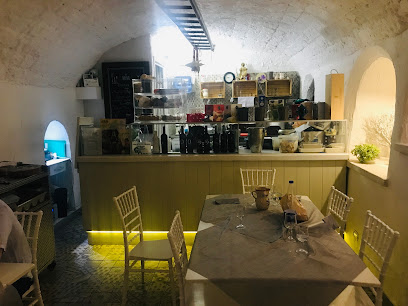
Antò - Cucina Tipica Pugliese [RISTORANTE&TRATTORIA]
Experience authentic Pugliese cuisine at Antò in Bari—where traditional flavors meet warm hospitality.
![Antò - Cucina Tipica Pugliese [RISTORANTE&TRATTORIA]](https://evendo-location-media.s3.amazonaws.com/RestaurantImages/5fa0a461-958c-4d2d-8a16-9c00e69c7381)
La Uascezze
Experience innovative gastropub cuisine at La Uascezze in Bari – where tradition meets creativity in every delicious dish.

La Cecchina - Ristorante di cucina italiana, gourmet, pugliese, miglior pesce e carne locale. Ristoranti a Bari Vecchia
Experience authentic Pugliese cuisine at La Cecchina in Bari Vecchia - where tradition meets gourmet excellence.
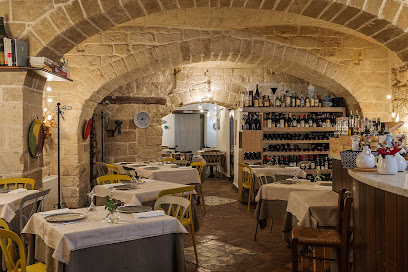
Le Nicchie
Discover authentic Italian flavors at Le Nicchie in Bari - where tradition meets taste in every delicious dish.
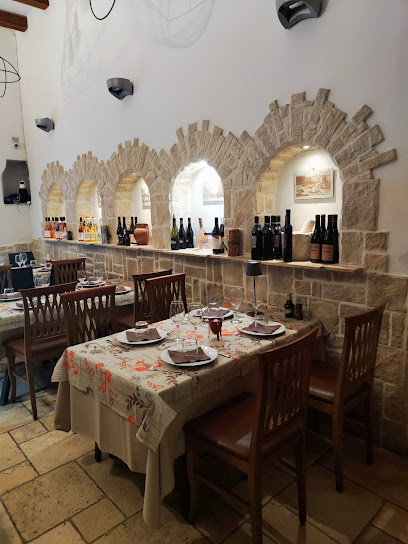
La Locanda di Federico
Experience authentic Italian flavors at La Locanda di Federico, where fresh seafood meets traditional culinary excellence in the heart of Bari.
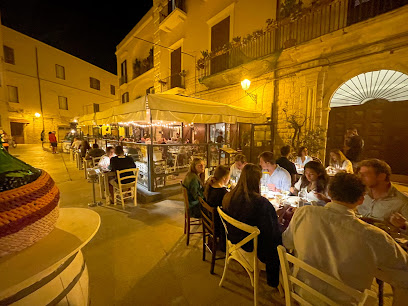
Osteria Vini e Cucina
Experience authentic Italian cuisine at Osteria Vini e Cucina in Bari - where fresh seafood meets traditional recipes in a cozy atmosphere.
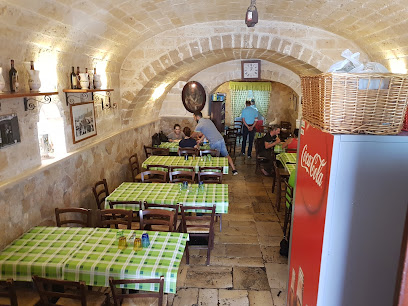
Canarute Barivecchia - Steakhouse e Hamburgeria
Discover the essence of Italian cuisine at Canarute Barivecchia, where traditional flavors meet modern dining in the heart of Bari.
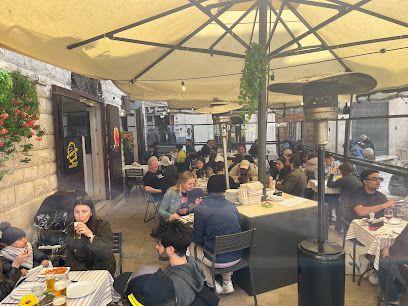
Ristorante Antico Cavò - Bari
Experience authentic Italian cuisine at Ristorante Antico Cavò in Bari - where tradition meets modern flavors in a cozy atmosphere.
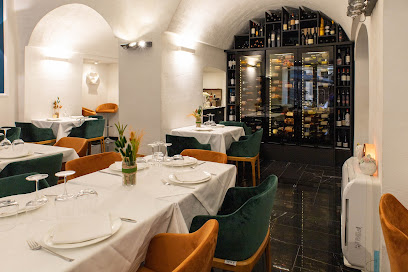
Markets, malls and hidden boutiques
Macedonia Bari (A)
Explore Macedonia Bari in Bari for an eclectic mix of vintage fashion and unique gifts that capture the spirit of Italian creativity.
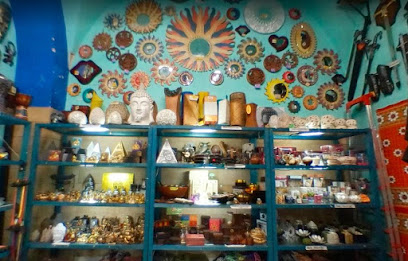
The Bridge Boutique Bari
Explore the finest leather craftsmanship at The Bridge Boutique in Bari, where style meets tradition in every exquisite handbag.
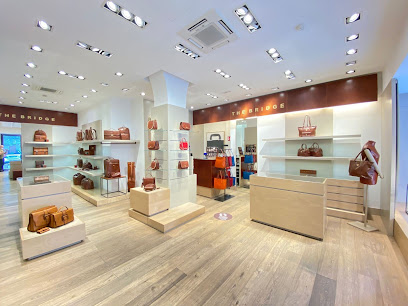
Vintage Store - Leccisi Collection
Explore Bari's Leccisi Collection, a vintage store brimming with unique clothing, antiques, and artistic treasures for discerning travelers.
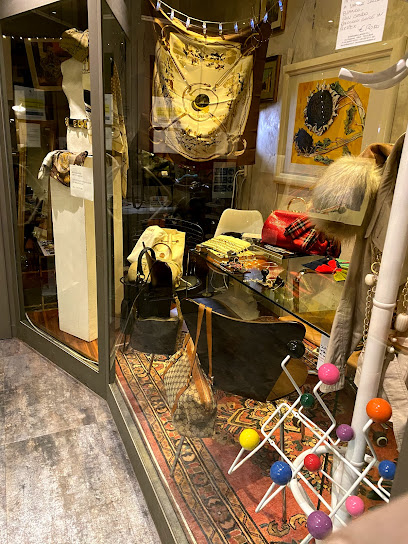
Souvenir shop bari.it
Discover unique artistic handicrafts and fashionable accessories at Bari's charming souvenir shop, perfect for memorable gifts and keepsakes.
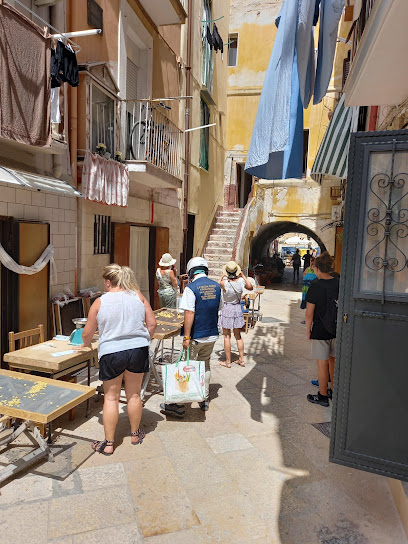
Made in Puglia
Explore the vibrant artisan craft scene at Made in Puglia, where unique handmade treasures await in the heart of Bari.
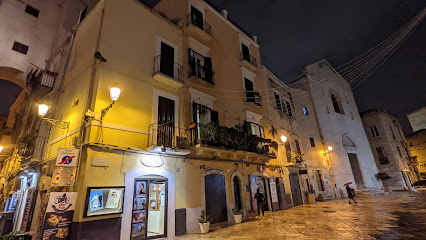
Dream Store
Explore Bari's cultural treasures at Dream Store, your go-to destination for authentic souvenirs and unique Italian craftsmanship.

Bottega Nikolaus
Discover authentic Italian craftsmanship at Bottega Nikolaus, a premier craft store in Bari offering unique handmade treasures and cultural experiences.
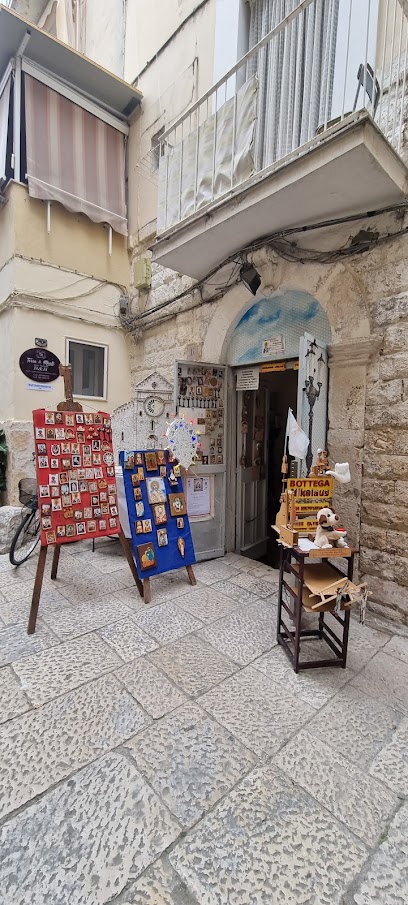
Ezia Regali
Discover unique gifts and local crafts at Ezia Regali, a charming gift shop in the heart of Bari, perfect for tourists seeking authentic Italian souvenirs.

Gentile Rosa Souvenir
Explore Gentile Rosa Souvenir for authentic Bari pottery and unique Italian gifts, capturing the essence of local craftsmanship.

La bottega della fantasia
Discover unique crafts and local delicacies at La Bottega della Fantasia, Bari's charming store filled with creativity and culture.
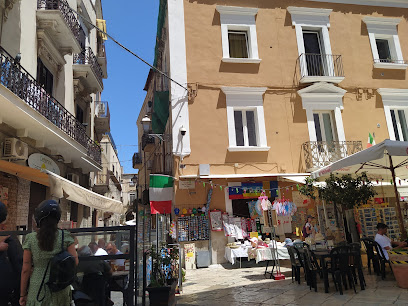
Essential bars & hidden hideouts
The ciclatera under the sea
Experience the vibrant atmosphere and stunning underwater views at The Ciclatera under the sea, a must-visit bar in Bari, Italy.
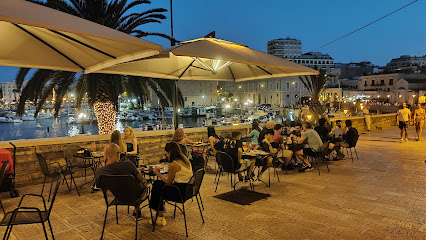
MercantileNove
Discover the essence of Bari at MercantileNove, where cocktails, fine wines, and espresso come together in a lively atmosphere.
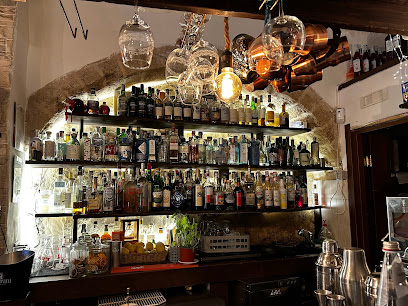
La Ciclatera
Discover La Ciclatera: A lively pub in Bari, where creative drinks and a vibrant atmosphere await your visit.
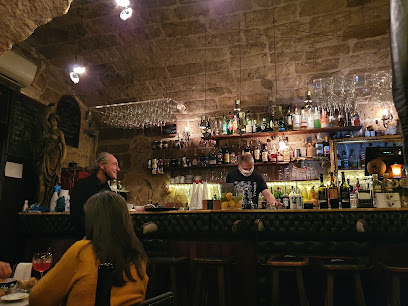
Le Chat Noir
Experience the vibrant nightlife of Bari at Le Chat Noir, a cocktail bar offering creative drinks and a stylish atmosphere for unforgettable evenings.
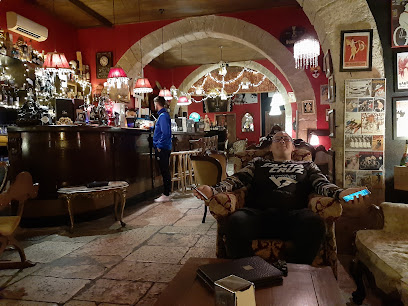
La Bitta Porto Sicuro
Experience the vibrant pub culture of Bari at La Bitta Porto Sicuro, where local brews and bistro-style cuisine create unforgettable moments.
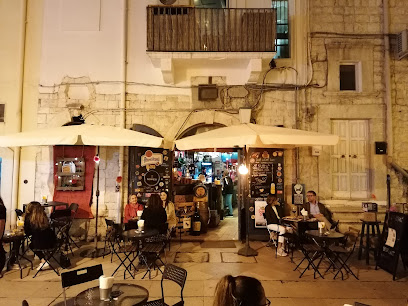
In Bocca al Luppolo
Experience the vibrant atmosphere and unique flavors of In Bocca al Luppolo, Bari's favorite pub for craft beer and delicious bites.
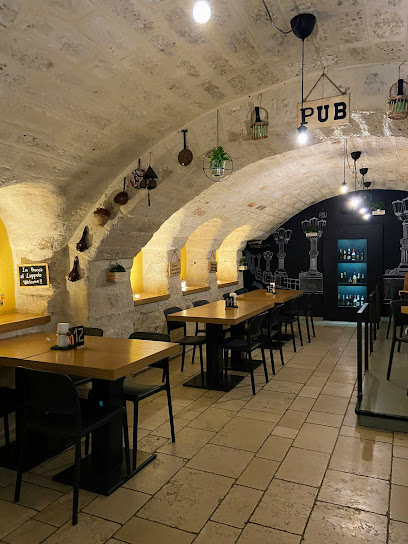
Cavanbah Pub
Discover the lively Cavanbah Pub in Bari, where delicious snacks and refreshing drinks create an unforgettable nightlife experience.
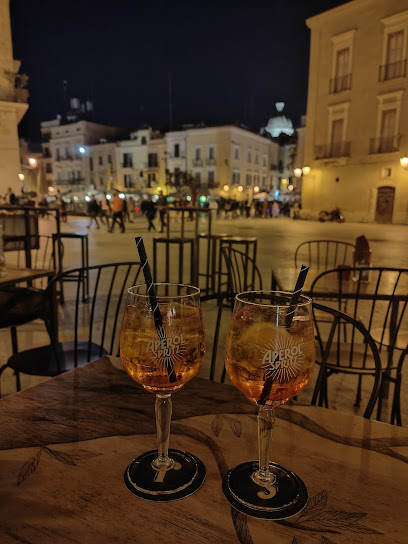
La Cicchetteria
Experience the vibrant nightlife of Bari at La Cicchetteria, where friendly vibes and great drinks await you in the heart of the city.
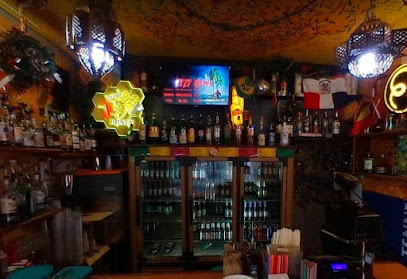
BarLume - Rock Bar
Discover the lively nightlife at BarLume - Rock Bar in Bari, where great drinks and vibrant music create unforgettable memories.
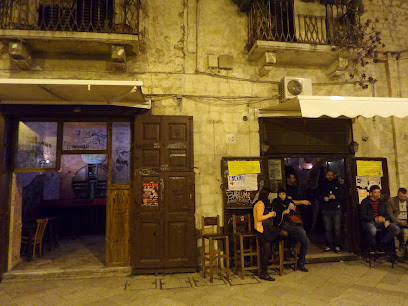
American Bar Città Vecchia
Discover the vibrant nightlife at American Bar Città Vecchia in Bari, where delightful drinks meet a lively social atmosphere.
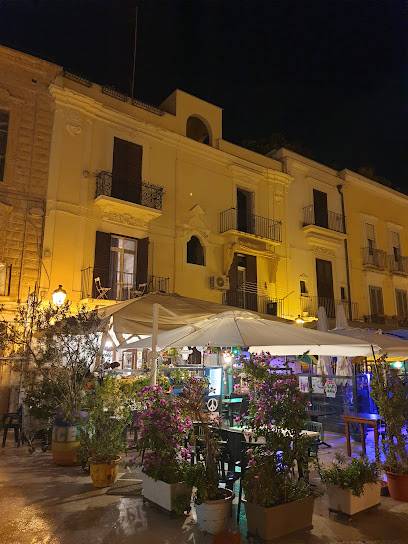
Local Phrases
-
- HelloCiao
[chow] - GoodbyeArrivederci
[ah-ree-veh-dehr-chee] - YesSì
[see] - NoNo
[noh] - Please/You're welcomePer favore/Prego
[pehr fah-voh-reh/preh-goh] - Thank youGrazie
[grah-tsyeh] - Excuse me/SorryScusa/Mi dispiace
[skoo-sah/mee dee-spyah-cheh] - How are you?Come stai?
[koh-meh stai] - Fine. And you?Bene. E tu?
[beh-neh. eh too] - Do you speak English?Parli inglese?
[pahr-lee een-gleh-zeh] - I don't understandNon capisco
[nohn kah-pee-skoh]
- HelloCiao
-
- I'd like to see the menu, pleaseVorrei vedere il menù, per favore
[vohr-reh-ee veh-deh-reh eel meh-noo, pehr fah-voh-reh] - I don't eat meatNon mangio carne
[nohn mahn-joh kahr-neh] - Cheers!Salute!
[sah-loo-teh] - I would like to pay, pleaseVorrei pagare, per favore
[vohr-reh-ee pah-gah-reh, pehr fah-voh-reh]
- I'd like to see the menu, pleaseVorrei vedere il menù, per favore
-
- Help!Aiuto!
[ah-yoo-toh] - Go away!Vai via!
[vah-ee vyah] - Call the Police!Chiama la polizia!
[kyah-mah lah poh-lee-tsya] - Call a doctor!Chiama un medico!
[kyah-mah oon meh-dee-koh] - I'm lostMi sono perso/a
[mee soh-noh pehr-soh/ah] - I'm illSto male
[stoh mah-leh]
- Help!Aiuto!
-
- I'd like to buy...Vorrei comprare...
[vohr-reh-ee kohm-prah-reh] - I'm just lookingSto solo guardando
[stoh soh-loh gwahr-dahn-doh] - How much is it?Quanto costa?
[kwan-toh koh-stah] - That's too expensiveÈ troppo caro
[eh troh-poh kah-roh] - Can you lower the price?Puoi abbassare il prezzo?
[pwah-ee ahb-bahs-sah-reh eel preh-tsoh]
- I'd like to buy...Vorrei comprare...
-
- What time is it?Che ora è?
[keh oh-rah eh] - It's one o'clockÈ l'una
[eh loo-nah] - Half past (10)Sono le dieci e mezza
[soh-noh leh dee-eh-chee eh meh-tsa] - MorningMattina
[maht-tee-nah] - AfternoonPomeriggio
[poh-meh-ree-joh] - EveningSera
[seh-rah] - YesterdayIeri
[yeh-ree] - TodayOggi
[oh-jjee] - TomorrowDomani
[doh-mah-nee] - 1Uno
[oo-noh] - 2Due
[doo-eh] - 3Tre
[treh] - 4Quattro
[kwah-troh] - 5Cinque
[cheen-kweh] - 6Sei
[say] - 7Sette
[seht-teh] - 8Otto
[oh-toh] - 9Nove
[noh-veh] - 10Dieci
[dee-eh-chee]
- What time is it?Che ora è?
-
- Where's a/the...?Dov'è...?
[doh-veh] - What's the address?Qual è l'indirizzo?
[kwal eh leen-dee-ree-tsoh] - Can you show me (on the map)?Puoi mostrarmi (sulla mappa)?
[pwah-ee moh-stahr-mee soo-lah mahp-pah] - When's the next (bus)?Quando passa il prossimo (autobus)?
[kwan-doh pahs-sah eel prohs-see-moh ow-toh-boos] - A ticket (to ....)Un biglietto (per ....)
[oon beel-lyet-toh pehr]
- Where's a/the...?Dov'è...?
History of Bari Vecchia
-
Bari Vecchia, the old town of Bari, has its roots in antiquity, with its earliest foundations laid by the Greeks in the 4th century BC. The strategic coastal location made it an essential port for trade and cultural exchange. The Romans later took control, further developing the area and integrating it into their extensive empire, which laid the groundwork for the town's significance in the region.
-
During the Byzantine era, particularly from the 6th to the 11th centuries, Bari Vecchia became a vital center for the Eastern Roman Empire. The city was fortified, and its churches, notably the Basilica di San Nicola, were built to reflect the Byzantine architectural style. This period marked a flourishing of trade and cultural exchange between the East and West, with Bari becoming a key player in the Mediterranean.
-
In the 11th century, the Normans conquered Bari, leading to a significant transformation of the city. They established the County of Bari, and the construction of imposing structures such as the Norman-Swabian Castle began. This era introduced Romanesque architecture, which is still evident in the churches and public buildings of Bari Vecchia, showcasing the blend of Norman, Byzantine, and local styles.
-
The 13th century ushered in the rule of Frederick II, who consolidated the Kingdom of Sicily, which included Bari. This period saw the construction of many significant structures and the establishment of Bari as a cultural hub. The region experienced economic growth, and the university was founded, enhancing its reputation as a center for learning and culture.
-
The 16th and 17th centuries were marked by a cultural renaissance in Bari Vecchia, even as the region faced challenges from the Ottoman Empire. During this time, the local population maintained its identity through vibrant festivals, culinary traditions, and religious practices. The architecture continued to evolve, with Baroque influences becoming prominent in the construction of churches and public buildings.
-
Bari Vecchia endured significant damage during World War II, particularly from air raids targeting the port. Post-war reconstruction efforts focused on restoring the historical districts, preserving the unique character of the old town. This led to a renewed interest in the cultural heritage and history of Bari Vecchia, which has since become a focal point for tourism and local pride.
Bari Vecchia Essentials
-
Bari Vecchia is centrally located in Bari, easily accessible from other neighbourhoods. If arriving by train, Bari Centrale is the main station. From there, you can either walk (approximately 20 minutes) or take a local bus (line 21, 22) to the old town. Taxis are also available and can take you directly to the entrance of Bari Vecchia.
-
Bari Vecchia is best explored on foot due to its narrow winding streets and pedestrian-friendly layout. Bicycles can be rented from various shops around the city for a more leisurely exploration. Public transport options like buses are limited within the old town, but they connect to other parts of Bari. For longer excursions, consider using local taxis or rideshare apps.
-
Bari Vecchia is generally safe for tourists, but it's wise to remain vigilant, especially in crowded areas. Pickpocketing can occur in busy streets or markets. It's advisable to avoid poorly lit alleys at night. While the area is not known for violent crime, exercising caution and being aware of your surroundings is always prudent.
-
In case of an emergency, dial 112 for police, fire, or medical assistance. There are hospitals and pharmacies in and around Bari Vecchia for medical needs. It's recommended to have travel insurance that covers emergencies. For less urgent matters, local pharmacies can provide over-the-counter medication.
-
Fashion: Do dress modestly, especially when visiting churches. Avoid shorts and sleeveless tops in these areas. Religion: Do respect local customs; cover your head in certain religious sites. Public Transport: Do give your seat to elderly passengers, and don't eat or drink on public transport. Greetings: Do greet locals with a friendly 'Ciao' or 'Buongiorno'. Eating & Drinking: Do try the local cuisine and accept food offerings. Don't waste food or refuse a meal, as it's considered impolite.
-
To experience Bari Vecchia like a local, visit the daily market at Piazza Mercantile for fresh produce and local delicacies. Engage with local artisans and shopkeepers; many are eager to share stories about their crafts. Try to learn a few phrases in Italian, as locals appreciate the effort. Don't miss the evening passeggiata (stroll) when locals gather in the streets to socialize. For a unique perspective, explore the hidden corners of the old town, where you can find charming squares and local events.
Trending Landmarks in Bari Vecchia
-
Basilica San Nicola
-
Basilica Cattedrale Metropolitana Primaziale San Sabino
-
Il Fortino di Sant'Antonio
-
Largo Albicocca - Piazza degli Innamorati
-
Muraglia di Bari
-
Ruderi di Santa Maria del Buon Consiglio
-
Palazzo del Sedile
-
Column of Shame or Column of Justice
-
Palazzo Gironda
-
Ex Convento di Santa Chiara d'Assisi
Nearby Cities to Bari Vecchia
-
Things To Do in Matera
-
Things To Do in Ravello
-
Things To Do in Dubrovnik
-
Things To Do in Amalfi
-
Things To Do in Herceg Novi
-
Things To Do in Pompeii
-
Things To Do in Positano
-
Things To Do in Budva
-
Things To Do in Tivat
-
Things To Do in Bar
-
Things To Do in Kotor
-
Things To Do in Trebinje
-
Things To Do in Herculaneum
-
Things To Do in Ulcinj
-
Things To Do in Perast


